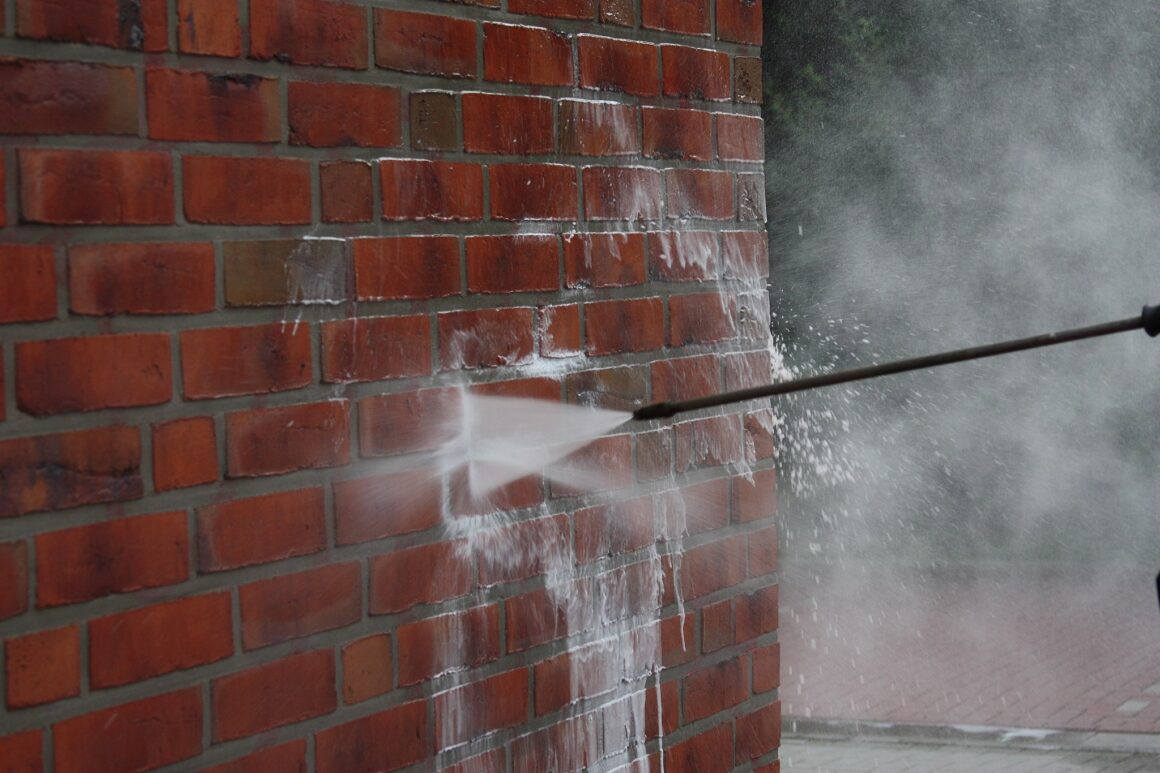Table of Contents Show
How to Clean Paint From Brick
If you have been unlucky enough to have drawn the task of cleaning paint off of brick you are in for quite a workout. Before you begin the task you’ll need to know the answers to a couple of basic questions.
What is the condition of the brick and how old is the paint? If the brick is in poor shape then removing the paint may do more damage than it’s worth. If the paint was manufactured before 1970, it likely contains a lead base.
Once you’ve got these questions answered you can choose the best method for paint removal.
Sandblasting and Power Washing
If your brick is in good shape and the paint was applied post-1970, then sandblasting and/or power washing are fine methods for paint removal. Because sandblasting and power washing use pressurized materials to blast away paint, there will be a lot of airborne particles.
For your safety, you should wear safety goggles and a respirator. Also if too much pressure is used it can ruin the finish of the brick, or possibly leave gouges and a very uneven surface.
Brick is a porous material, and power washing will cause the brick to soak up water. Before doing any further work on the brick, it will have to dry out. If the power washing doesn’t leave enough dry time before freezing temperatures set in, the brick will break from the inside out, as the water in the pores expands.
Read Also:
Liquid Thinners
Commercial paint thinners can be applied with a rag to a painted brick surface and then scraped away with a wire brush. This is particularly effective when dealing with oil-based paints.
This type of removal can be done with any type of paint removal liquid (marine-based thinners are usually the strongest). Whenever you are using this method, spread out a drop cloth beneath the area you are working on.
This process is extremely messy, often resulting in clumps of wet paint and solvent all over. This solvent can cause damage to other surfaces if it isn’t contained.
Whenever using these solvents it is important to wear a respirator. These liquids off gas are very toxic fumes. If you are using them indoors it’s important to have the windows open and run a fan for ventilation.
Gels and Pastes
The most common method for removing lead-based paints is using a gel or paste. These removers are applied in a thick layer on the painted surface, and then a piece of fabric is pressed up against the gel.
After a short period, the fabric is peeled away and the paint comes with it. This keeps the amount of lead-based particles to a minimum, as most of the paint stays stuck to the fabric.
This process is the most lengthy of all, but often has the best result, and as such is the preferred method of restoring historic brick homes.
Cleaning paint off of brick often takes more than one attempt. The first run will remove a good portion of the paint, but there will still be areas in the recesses that aren’t clean.
Sometimes this “weathered” look is more attractive than completely clean brick. A second run-through may clean the brick even further, but it could take four or five attempts before the brick is sufficiently clean for your needs. A good practice is to estimate the time it should take to clean the brick and multiply it by three.
If you run into the problem of a whitish tint on your bricks when you are cleaning them, you need to rinse the bricks more quickly and more thoroughly than you are already. The residual whitewash is the remnants of the paint re-adhering to the brick.

